звоните: +7 495 204-207-8
e-mail: art@quartagallery.ru
Recent posts
- Необычная судьба тверской художницы Наталии Пономаревой
- Жемчужина деревянной архитектуры русского севера
- Первая народная галерея в Льялово
- Online auction - a practical instruction. How to take part?
- История русской анимации и коллекционирование «истории» мультипликационных фильмов
- История в гравюрах и литографиях уникального печатного издания «Революционная Москва: Третьему конгрессу Коммунистического Интернационала». 1921
- Painting as a Gift
- What happened to frescoes of Kievskaya Metro Station?
Graphic Art
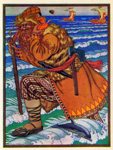
Graphic art, mastering the lifeless white space and transforming it according to your artistic ideas is, probably, the most virtuoso and versatile type of visual art.
The history of its development reflects not only the transition of artistic mentality from primitive forms of petroglyphs to the finesse of the Oriental calligraphy, but it also unambiguously points to the increasing demand of both the creator and the viewer in more exquisite and complex thinking and perception products. As it usually happens in art, a limitation plays a positive role in enhancing artistic abilities, forcing the creator to seek unexpected, unexplored, more precise and more sophisticated tools to experience the world.
A drawing, which lies at the heart of graphic art, acquired its modern status and weight during Renaissance and was finally transformed into an independent art type owing to the efforts of the Renaissance titans who were so keen on the scientific exploration of the environment. It was that particular period that turned the drawing into a multi-purpose artistic tool used for studying nature and the means of depicting it on the plane, for developing the scientific basis of arts, fixing observations and thoughts and preparing for the creation of full-scale artworks.
The drawing is the foundation of all kinds of graphic arts and of art, in general. Normally it is executed on a piece of paper and the artist needs only the simplest tools to do it: a pencil or a pen. In other cases it would require more sophisticated tools to create a graphic artwork: a printing press, lithographic stones, various chisels for linoleum or wood , and many others.
However, from the very beginning the term “graphics” was used only when speaking about writing and calligraphy, about the art of font creating directly connected to the development of book printing. Starting from fonts graphic art gradually grew into a full scale direction of book design which included the creation of illustrations as well. This area of graphic art is rich in celebrity names: from Albrecht Durer and Paul Gustave Dore to Ivan Bilibin and the muse of French surrealism Leonor Fini. At the turn of the 19th century book graphics was revived in Russia. Not only its artistic concept changed dramatically but so did its esthetic one. The genuine reformers of the book art in Russia turned to be the artists from St.Petersburg association “Mir Iskusstva” closely followed by the Moscow association “Blue Rose” who so masterfully intertwined Russian patterns with Oriental ornaments and turned the artworks of that period into a unique phenomenon of the Russian art.
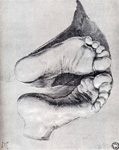

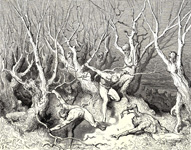
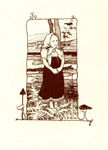
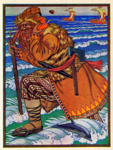
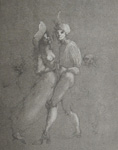
Albrecht Durer Paul Gustave Dore Ivan Bilibin Leonor Fini
Another independent area of graphic art is posters. As a rule, they respond to the vital events of the day, including contests, concerts and exhibitions. The main types of posters are political, sports, ecological, advertising, satirical, enlightening, theatrical and others. This is a relatively young area of graphic art which was formed in the 19th century as a kind of trade and theatre advertising (posters by Jules Cheret and Henri Toulouse-Lautrec) and then served as a political propaganda tool (posters by V.V.Mayakovskiy, D.Moor, A.A.Deineka in the USSR and T.Trepkovskiy in Poland).
Rapidness, numerosity and expressiveness make graphic art the most efficient,
democratic and mass type of art. It is for this reason that it has always been a powerful ideology weapon employed by Francisco de Goya in his etchings and by the master of political satire Honore Daumier in his lithographs, let alone the Soviet posters among which some genuine masterpieces can be found, for example, those created by the pioneer of the genre in the Soviet Russia Dmitriy Moor.
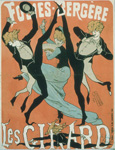
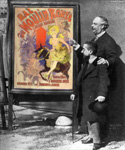
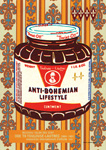
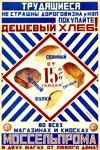

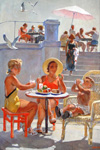
Jules Cheret and Henri Toulouse-Lautrec V.Mayakovskiy and A.Rodchenko D.Moor A. Deineka
In the Soviet Russia graphic art was also a means of avoiding censorship since, in many cases, it served as a preparatory material for the artist when working with paid-for canvases. Numerous ideas, sometimes much more radical and free-spirited, were left there on notebook or album pages drawn in pencil and ink. Nowadays they have become self-sufficient artworks being not only witnesses to complex historical processes in the art of the Soviet period but also a kind of chronicles of the unofficial creativity of the artists. In our gallery you can find pieces like that created by Evsey Reshin, Inna Mednikova, Evgeny Rastorguev and many other painters of the time.
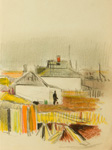
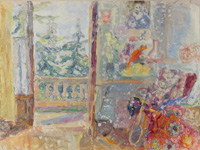
.jpg?1488823978095)
.jpg?1488824015426)
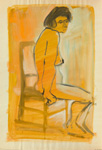
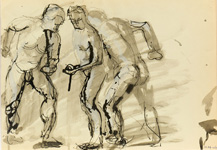
E. Reshin I. Mednikova T. Guseva E. Rastorguev Natalia Orlova
Contemporary graphic arts , which spread to more and more areas of human life, have given birth to some new branches among which are a complex computer graphic art and rapidly developing industrial graphics. When creating modern industrial artworks it is equally important to take into consideration all the elements, including type, ornament, drawn (mostly of symbolic character) and photo images, color and polygraphy solutions.
This kind of graphic art is rooted in the trademarks created since ancient times. In the process of market development it evolved as a specific art area serving the industries and the trade , and it took its final shape at the end of the 19th century when there appeared teams of professional artists specializing in advertising and packaging materials design.
Strong consumer-oriented atmosphere of the 21st century does not hinder the growth of fantasy and amazing area of graphic arts creating optical illusions. The world has come close to the edge where reality acquires more and more blurred contours and the artist strives even more to get out of the plane into a multi-dimensional space.
